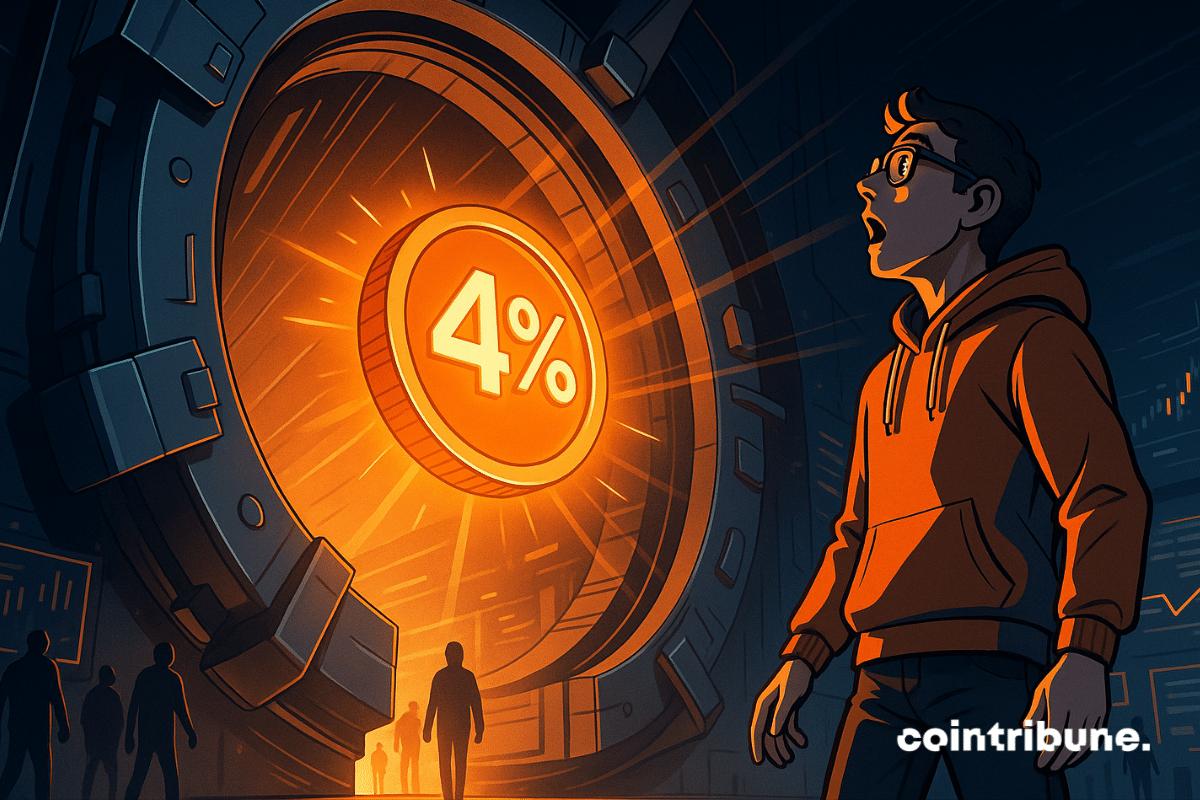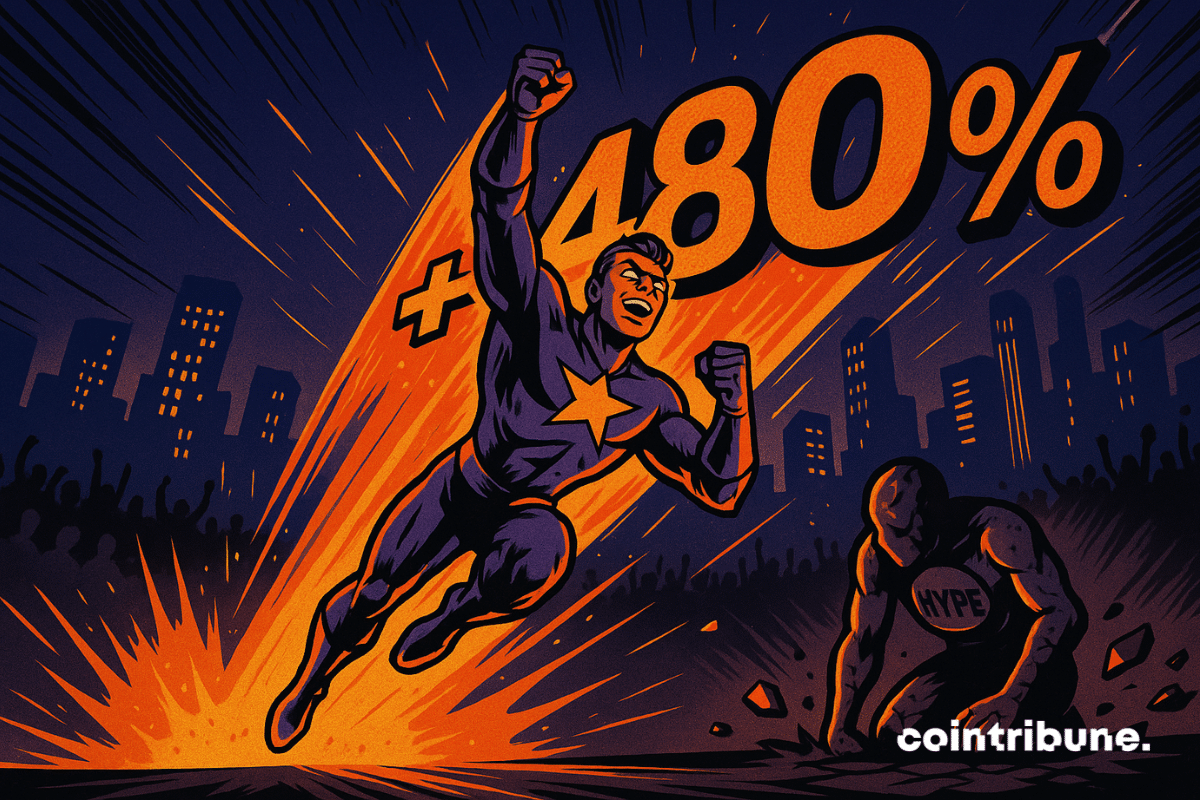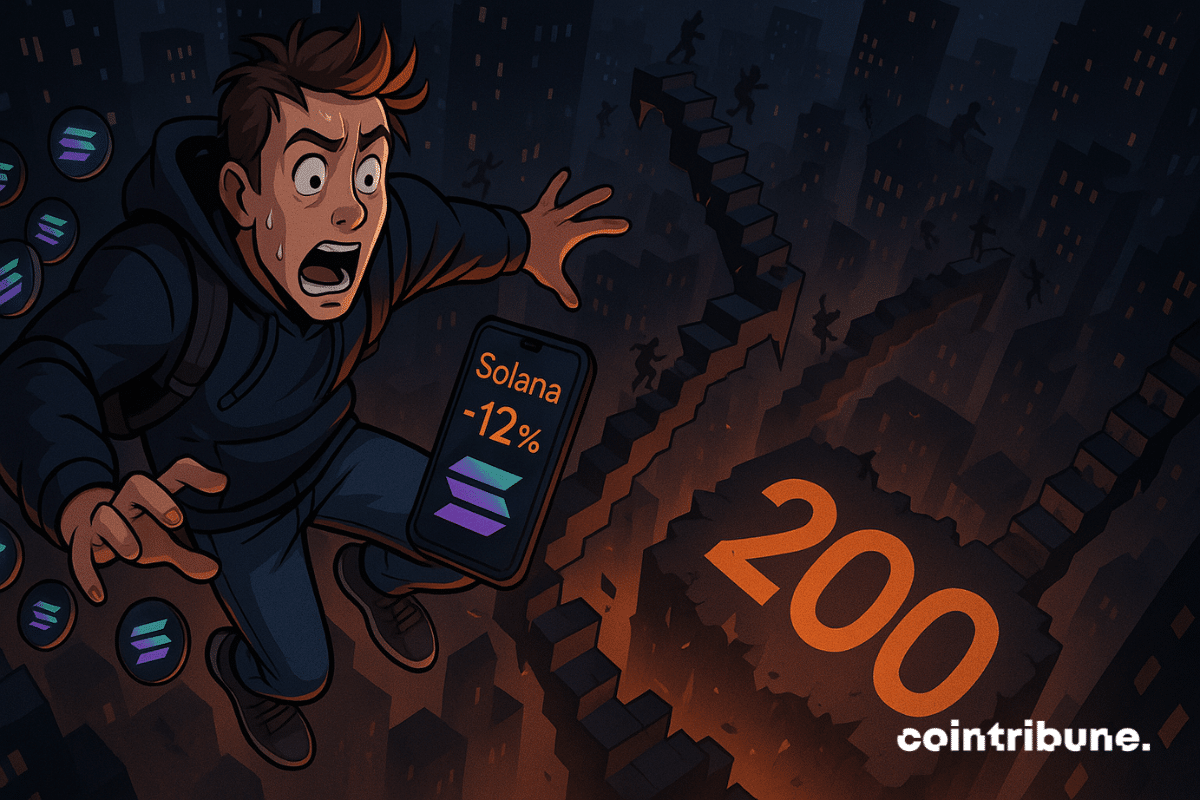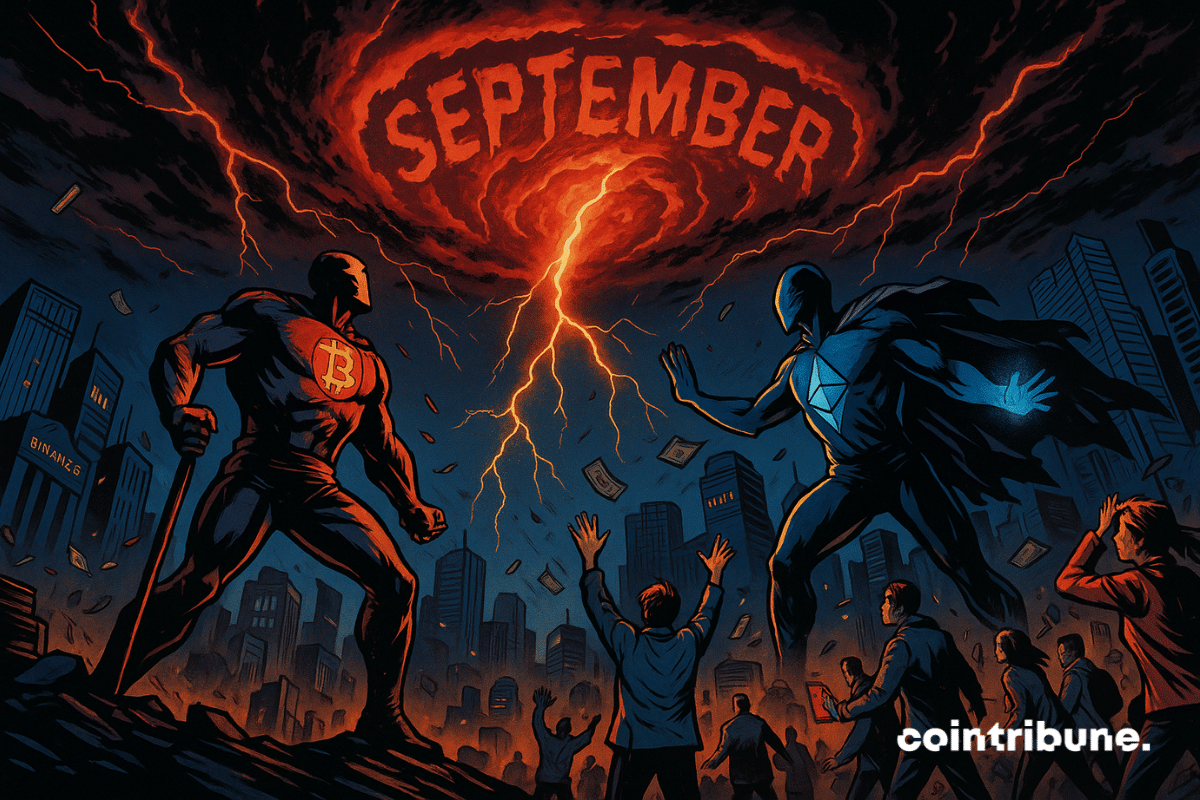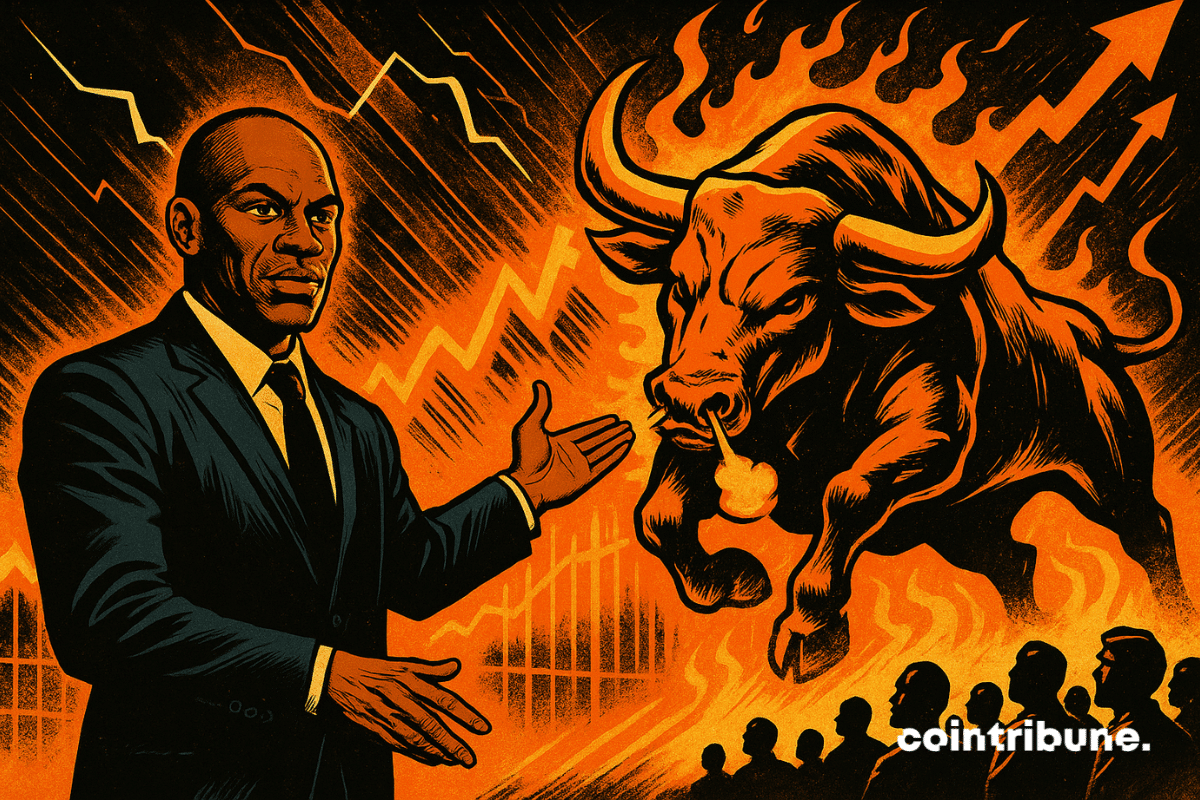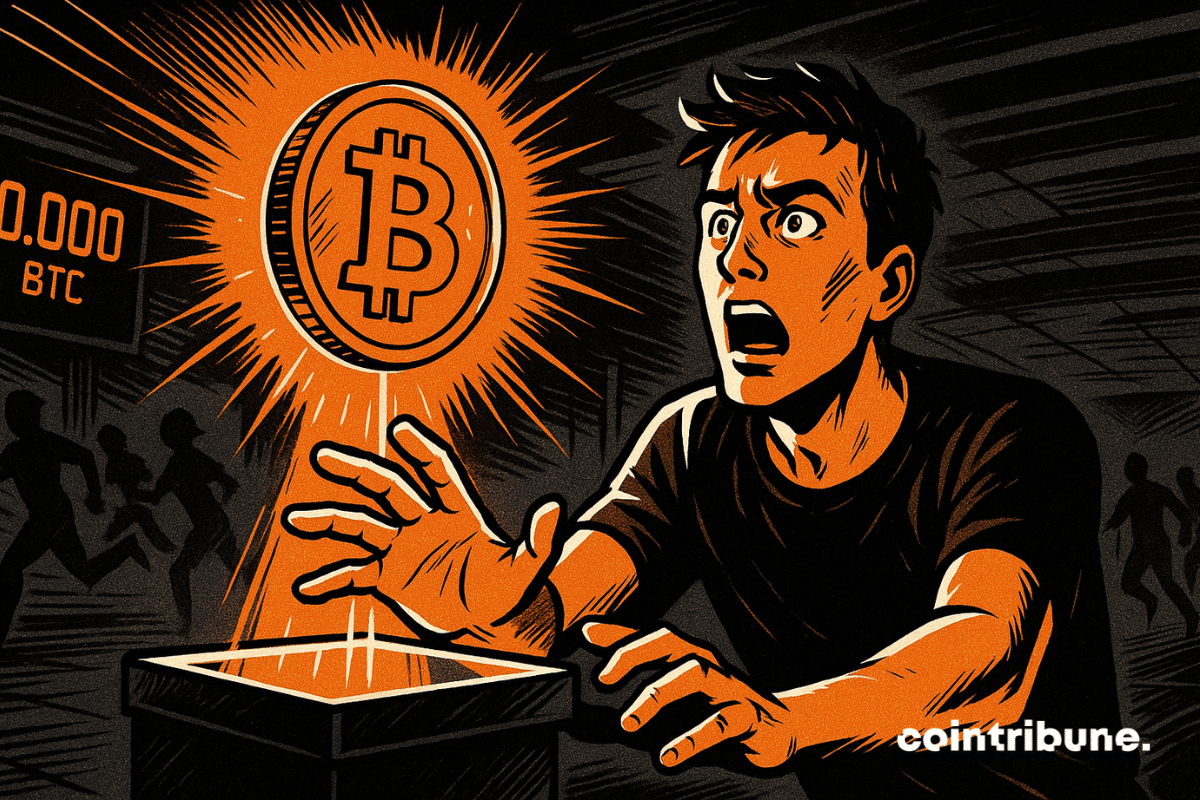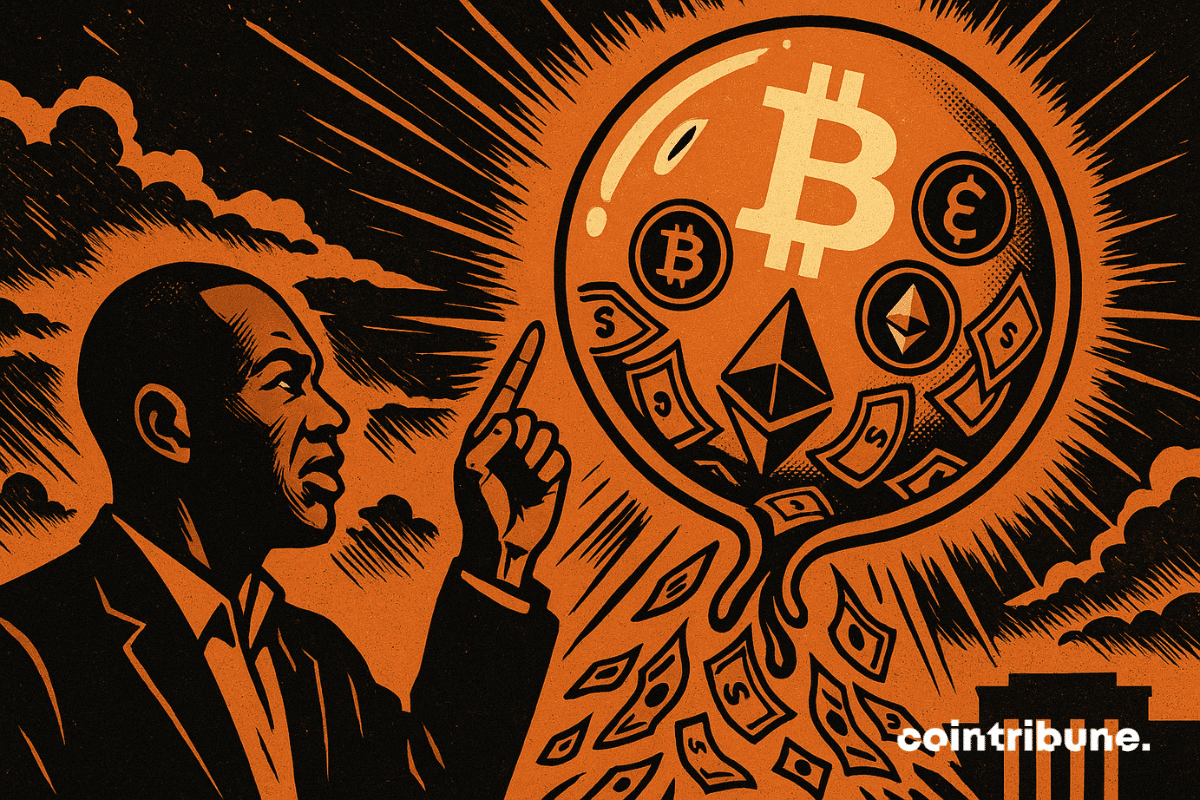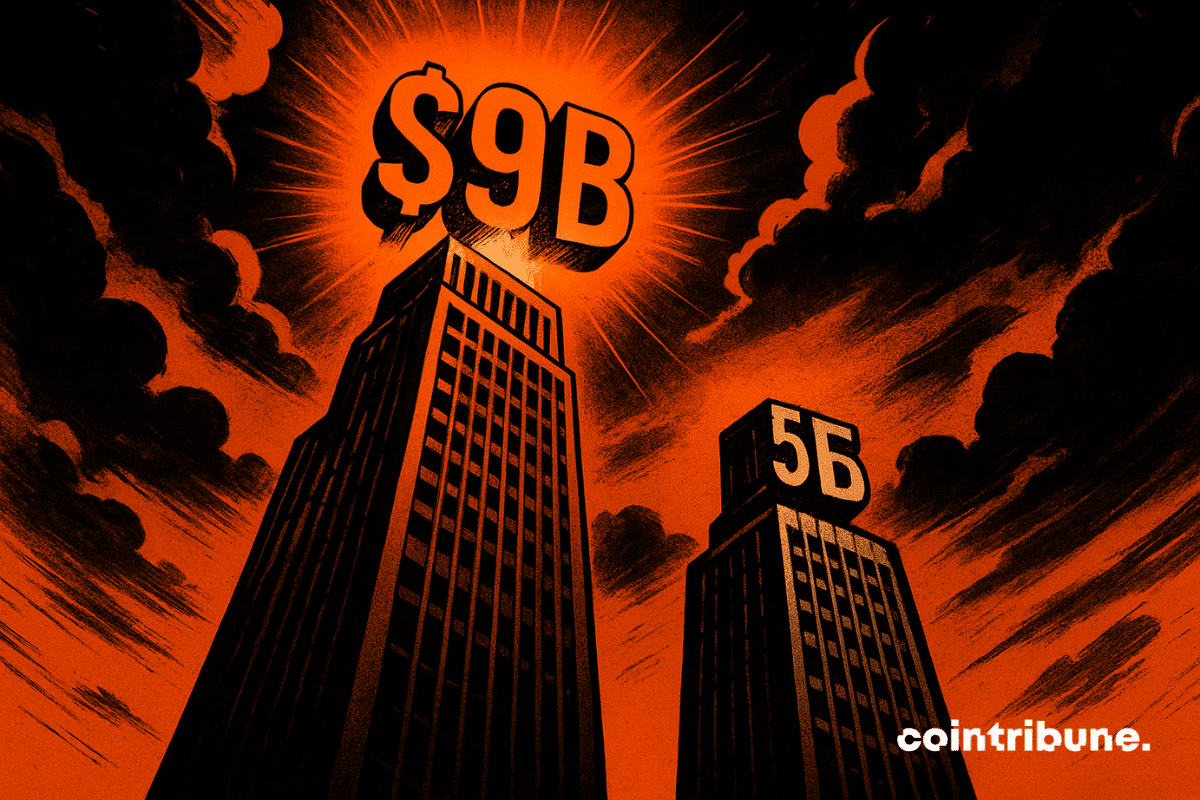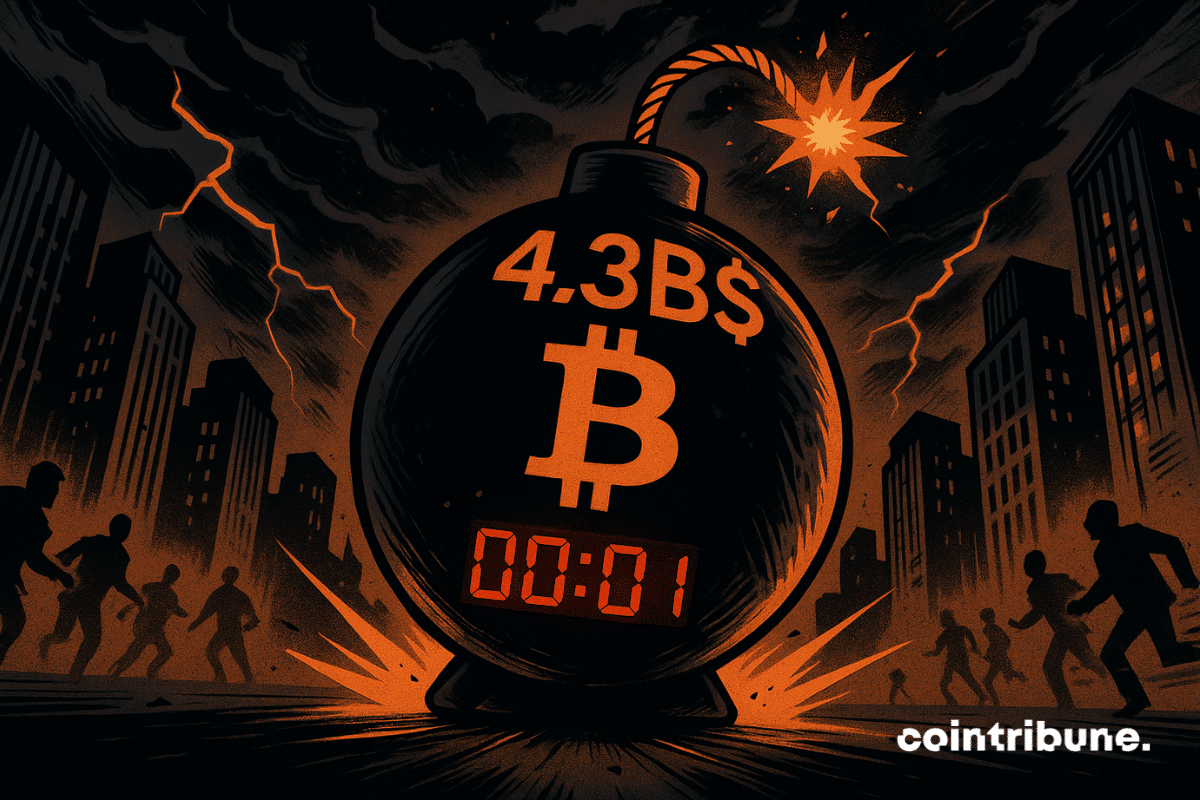Polymarket introduces annualized rewards for long-term positions, supporting accurate pricing in high-profile political and global markets.
Theme Trading
In a few days, wallets identified as whales moved several tens of millions of dollars from Hype to Aster, a newly launched token on a DEX supported by Changpeng Zhao. This massive capital movement, observed since September 17, quickly propelled Aster among the 40 largest global cryptos.
Bitcoin, once called a bubble, is now creating millionaires in series: 145,000 in one year. Bankers are grinding their teeth, speculators are popping champagne.
The leverage effect, driver of soaring increases, becomes a formidable trap when the market turns. Solana (SOL) suffers the consequences, with a brutal drop to $213, its lowest level in two weeks. While the Fed briefly rekindled risk appetite, persistent tensions over inflation and employment quickly reversed the trend.
While the crypto market begins a new phase of pullback, Avalanche surprises. The AVAX token jumped 10% this Tuesday, reaching 33 dollars, at the very moment when major capitalizations showed losses. The crypto thus stands out by an opposite dynamic, built and supported by significant players.
September once again catches up with the crypto market. After a promising start, the trend reversed with a brutality that hits the main capitalizations. Bitcoin, Ethereum, and Dogecoin show a sharp decline, exposing a marked exhaustion of the bullish momentum. As every year at the same time, the specter of a "Red September" reappears, fueled by weakened technical signals and a sharply declining market sentiment. Once again, the scenario of a red month seems to be drawing with insistence.
As October approaches, the crypto market revives a now familiar mechanism: the "Uptober" effect. Behind this term that has become a seasonal mantra, a recurring data point intrigues analysts. Indeed, for several years, October has established itself as one of the most bullish months for bitcoin, often following a September with a slight rebound. This pattern, both statistical and psychological, shapes investors’ expectations and acts as a potential trigger in a context already marked by a progressive market recovery.
A paralyzed blockchain bridge, more than two million dollars gone, and a community awaiting explanations. Ten days after the Shibarium bridge hack, no trace of the stolen funds, and the system remains completely blocked. This operational silence keeps the Shiba Inu ecosystem in a worrying haze, where each day without an answer erodes trust a little more.
Bitcoin records a record of activity on its network, crossing a new milestone. According to data from CryptoQuant relayed by analyst CryptoOnchain, the average volume of confirmed transactions now reaches 540,000 per day. This resurgence of use, driven by protocols like Ordinals and Runes, occurs in an uncertain market context, where fundamental signals take precedence over announcements.
What if the threshold of 850 billion dollars held by the U.S. Treasury became the new catalyst for the crypto market? Arthur Hayes, co-founder of BitMEX, estimates that once the U.S. Treasury general account (TGA) is filled at 850 billion dollars, cryptos will enter a continuous upward phase. This position comes as the Fed has just cut its rates, reigniting debates on the impact of U.S. monetary policies on the dynamics of bitcoin and altcoins.
Chainlink records its best performance since 2021 and approaches a decisive technical threshold. Driven by a rebound of more than 80% over the quarter, the crypto attracts analysts' attention as a long-term bullish configuration, rarely observed, is about to be validated. In a market seeking clear direction, LINK could start a new cycle, with projections suggesting a return to 100 dollars.
On CNBC, Eric Trump stated that Bitcoin has "taken the role of gold in today’s world," elevating crypto to the status of a strategic safe haven asset. This media appearance coincides with the launch of American Bitcoin, a mining and BTC holding company he is close to. Far from a mere announcement, this statement fits within a dynamic where publicly traded companies are beginning to integrate bitcoin at the heart of their reserve strategy.
Less than a year after a record $4.3 billion settlement with the US Department of Justice, Binance seeks to turn the page. The platform, a pillar of the global crypto ecosystem, is negotiating the lifting of the monitoring imposed by the authorities under the agreement. This move raises questions about the evolution of the balance of power between regulators and major players in the sector.
The most underestimated risk of bitcoin may no longer be its volatility, but its gradual disappearance from the market. A new report from Fidelity Digital Assets warns of an increasingly marked dynamic: a growing share of the BTC stock is accumulating in inactive or institutional wallets, permanently escaping liquidity. By 2032, this concentration could reach a historic threshold, redefining the available supply and market balances.
Nakamoto Holdings becomes the symbol of a fatigue in the Bitcoin treasuries model. Discover all the details here!
Standard Chartered sounds the alarm: crypto treasury companies, built around the accumulation of Bitcoin, Ethereum, and Solana, face a major crisis. The collapse of the mNAV weakens their business models and signals a consolidation phase where only the strongest players will be able to continue growing.
The US markets celebrated Monday the confirmation of a preliminary agreement between Washington and Beijing regarding the future of TikTok. Oracle, the favorite to acquire the Chinese platform, jumped more than 3% while the S&P 500 crossed the symbolic threshold of 6600 points for the first time.
The first ETFs exposed to XRP and Dogecoin will be launched this week in the United States. Carried by Rex Shares and Osprey Funds, these products mark an unprecedented regulatory breakthrough for two cryptos long kept away from traditional markets. This milestone broadens the range of assets accessible to investors, beyond bitcoin and Ethereum.
According to the latest on-chain data, 92% of the bitcoin supply is now in profit. A figure that attests to the strength of the market... but also marks a potentially delicate turning point. Historically, this level has preceded both rallies and sharp corrections. As euphoria gains ground, several indicators suggest the market could waver.
While the crypto market stalls, Arthur Hayes tempers the prevailing impatience. The cofounder of BitMEX believes that criticisms directed at bitcoin ignore a fundamental lever: global monetary policy. In a recent interview, he suggests that continued money printing by central banks could extend the crypto bull cycle until 2026. This macroeconomic analysis contrasts with the widespread pessimism and invites investors to reassess their benchmarks.
Recent chatters within crypto chat rooms indicate that prediction platforms Polymarket and Kalshi are exploring ways to raise capital, with Polymarket aiming for a higher valuation than Kalshi. Interestingly, this comes as decentralized betting begins to catch the eyes of top firms within the crypto space.
The co-founders of Glassnode predict a new peak for bitcoin, Ethereum and Solana within a month. This announcement contrasts with the prevailing caution and reignites the debate on the strength of the bullish cycle. Between on-chain data and uncertain macroeconomic context, this projection immediately attracted the attention of investors, dividing the community between hope for an imminent record and fear of excess optimism.
When Galaxy spends 700 million on Solana, it’s no longer poker: it’s the smashing entry of a crypto altcoin into the gilded halls of traditional finance.
Institutional capital is returning strongly to the crypto market. This week, spot Bitcoin ETFs recorded their highest inflows in two months, pushing the total capitalization beyond 4.1 trillion dollars. Such a symbolic threshold reflects a massive renewed interest in cryptos.
Gemini makes its debut on the Nasdaq under the symbol GEMI. The Winklevoss brothers' crypto platform successfully launched its IPO at 28 dollars per share, a price set beyond initial expectations. This listing comes as the crypto sector tries to regain market confidence in a climate still marked by regulatory uncertainties and the quest for profitability.
Boom of RWA in crypto: +11% in one week. Focus on this revolution led by Ethereum and BlackRock.
This Friday, the bitcoin market faces an extraordinary deadline: $4.3 billion worth of options expire. Such a shift could decide the short-term trajectory of BTC, suspended at the strategic threshold of $113,000. Its crossing or loss could offer buyers an unprecedented leverage... or give control back to sellers.
Eyes are fixed on the market as many financial firms warm up to go public on Wall Street this week. Among these potential debutants, American crypto exchange Gemini has increased its share price ahead of its initial public offering (IPO) scheduled for Friday.
The latest US inflation data propels bitcoin to new heights, but analysts remain divided on the short-term trajectory. The flagship crypto flirts with $115,000 as speculation about a Fed rate cut intensifies. Could a new correction precede the long-awaited surge?
The speculative momentum around bitcoin clashes with the reality of markets. Driven by the fervor of records and the unexpected support from Donald Trump, several publicly traded companies that based their financial strategy on accumulating BTC are undergoing a severe correction. Their shares sometimes fall below the value of their crypto holdings, exposing the limits of a model relying almost entirely on bitcoin's volatility.
